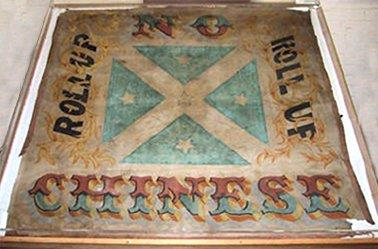I guess these paragraphs explain it all.
It was not until the arrival of General Douglas MacArthur in Australia in March 1942 that Curtin received proof that Churchill had betrayed Australia at the Arcadia Conference and had been lying to him when he promised powerful British support to oppose a Japanese invasion of Australia. MacArthur had been deeply shocked to learn while still in the Philippines that his army had been abandoned by President Roosevelt and Prime MInister Churchill to defeat and capture by the Japanese. An American submarine commander had penetrated the Japanese blockade of the Philippines and brought the grim news of betrayal at Arcadia to MacArthur.
Australia is saved from invasion by the Japanese Army!
In January 1942, Australia offered little in the way of economic resources to the Japanese, but senior admirals of Japan's Navy General Staff viewed Australia as a threat to Japan's newly conquered western Pacific empire, and they wanted to invade and occupy key areas of the northern Australian mainland. The admirals feared that the United States would be able to use Australia as a base to oppose further Japanese military aggression in the western Pacific region and to recover American territory already conquered by Japan.
Fortunately, by early March 1942, the Japanese Army had conquered and occupied so much territory from Burma to Australian New Guinea that it had overstretched its supply and manpower resources, and needed time to consolidate and fortify the boundaries of Japan's greatly expanded empire. Faced with this manpower shortage, the size of Australia, and transport problems, the Japanese generals refused to provide troops for an invasion of Australia at that time.
So, at a time when the Japanese Navy General Staff wanted to occupy key areas of the northern Australian mainland, and when Australia was ill-prepared to defend itself against a powerful and determined enemy, it appears to have been saved from invasion in March 1942 partly because the Australian mainland was so large, partly because the Japanese were running short of troops to invade and occupy additional territory, and partly because of the difficulty of supplying them across a vast stretch of ocean.
I hadn't got to this reference yet gc.
cheers
Doug






